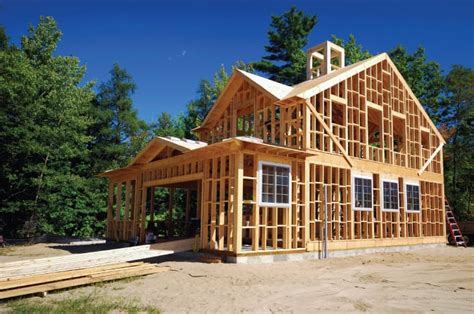How to Build a House: A Comprehensive Guide for Aspiring Homebuilders
Building a house is a monumental undertaking, a blend of meticulous planning, skilled labor, and unwavering dedication. This comprehensive guide breaks down the process into manageable steps, providing insights for aspiring homebuilders to navigate this exciting journey. Whether you're planning a small cabin or a sprawling mansion, understanding these fundamentals is crucial for success.
Phase 1: Planning and Design
This initial phase sets the foundation for your entire project. Neglecting this stage can lead to costly mistakes and delays down the line.
1.1 Define Your Needs and Budget:
Before even thinking about blueprints, clearly define your needs. How many bedrooms and bathrooms do you require? What style of home are you envisioning? Equally important is establishing a realistic budget. Factor in not only construction costs but also land acquisition, permits, and unexpected expenses. Underestimating costs is a common pitfall.
1.2 Secure Financing:
Building a house often requires significant financing. Explore various mortgage options and secure pre-approval to understand your financial capabilities. This pre-approval process will significantly streamline the land acquisition and contractor negotiation phases.
1.3 Acquire Land and Permits:
Choosing the right land is critical. Consider factors like zoning regulations, soil conditions, access to utilities, and proximity to amenities. Once you've secured your land, obtain the necessary building permits. This process can be lengthy, so initiate it early.
1.4 Design and Blueprints:
Engage an architect or draftsperson to create detailed blueprints. These blueprints will serve as the roadmap for your project. They should include specifications for every aspect of the house, from foundation to roofing. Thoroughly review and approve the blueprints before proceeding.
Phase 2: Construction
This phase involves the actual building of your house. It's crucial to manage this phase effectively to ensure timely completion and adherence to budget.
2.1 Site Preparation and Foundation:
This involves clearing the land, excavating for the foundation, and pouring the concrete. The foundation is critical for the structural integrity of your house. Ensure it's built to meet local building codes.
2.2 Framing:
The framing forms the skeleton of your house. This stage involves erecting the walls, roof trusses, and floor joists. Accuracy is crucial during framing to ensure a structurally sound house. Consider using pre-fabricated components to potentially speed up this process.
2.3 Roofing:
Once the framing is complete, the roof is installed. This protects the house from the elements and is a crucial step in preventing water damage. Choosing the right roofing material is important considering your local climate and budget.
2.4 Exterior Finishes:
After roofing, the exterior of the house is finished. This includes siding, windows, doors, and any other exterior features. Proper insulation during this stage is vital for energy efficiency.
2.5 Interior Finishes:
This stage involves installing drywall, flooring, cabinetry, fixtures, and other interior features. This is where your house starts to take on its final form.
2.6 Mechanical, Electrical, and Plumbing (MEP):
The MEP systems are critical for the functionality of your home. Ensure qualified professionals handle the installation of plumbing, electrical wiring, and HVAC systems. Proper inspections at each stage of the MEP process are highly recommended.
Phase 3: Final Touches and Move-In
The final stage involves finishing touches, inspections, and finally, moving in.
3.1 Final Inspections:
Before moving in, ensure all necessary inspections are completed and approved by the relevant authorities. This ensures your house meets all building codes and safety regulations.
3.2 Landscaping:
Landscaping enhances the curb appeal of your home. Consider planting trees, shrubs, and flowers to create a welcoming outdoor space.
3.3 Move-In:
Finally, it's time to move into your newly built home! Enjoy the fruits of your labor and the satisfaction of building your dream home.
Building a house is a complex process, but by following these steps and seeking professional help where needed, you can increase your chances of success. Remember to always prioritize safety and adhere to building codes and regulations throughout the entire project. Good luck!
